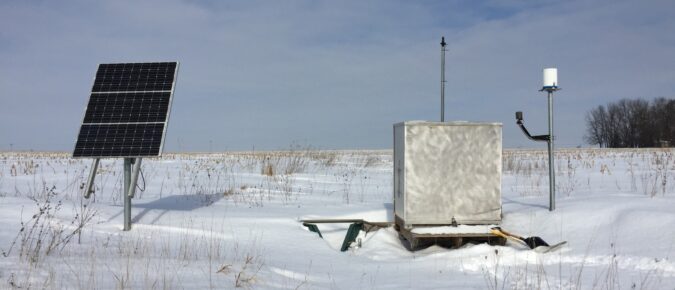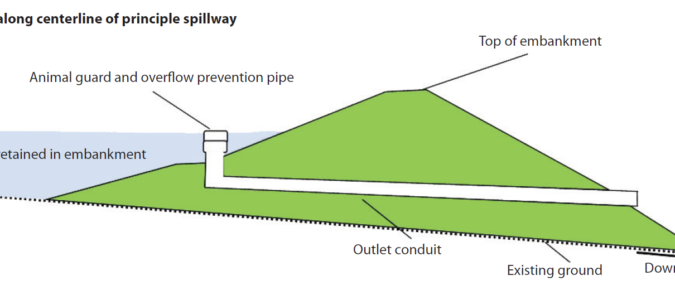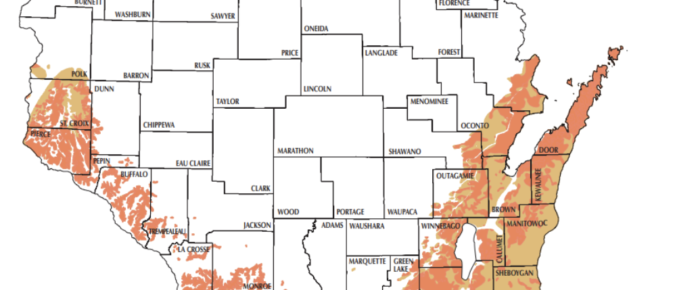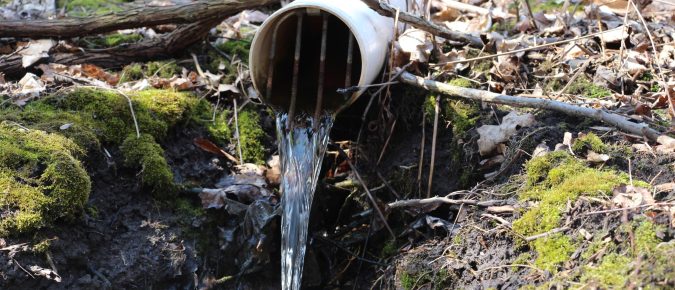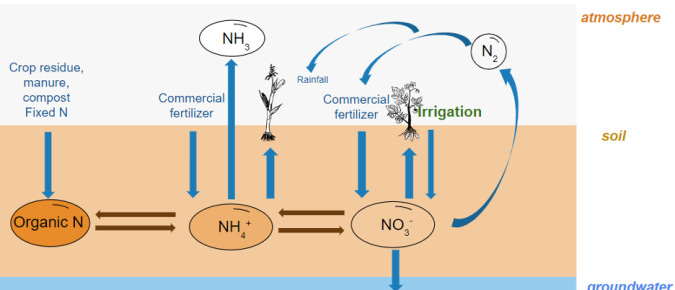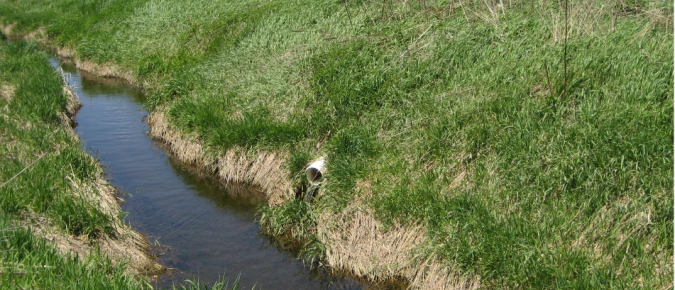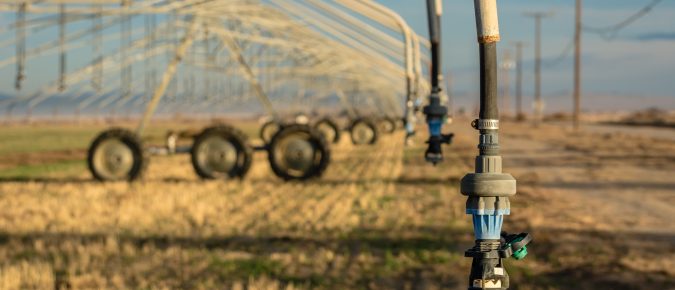In 2014, the University of Wisconsin-Madison Division of Extension Discovery Farms began a multi-year monitoring study on two farms (four basins) within Rock County to determine how different cropping systems and management practices impact surface water quality.
A common misconception about livestock manure is that it is simply a waste product of the farm. However, manure is rich in many nutrients and is a valuable resource when applied back onto fields that can benefit from manure application. Research has demonstrated positive impacts to soil quality/health, crop production, and overall farm management when manure is managed effectively.
A grade stabilization structure is a conservation tool that can effectively reduce the amount of sediment, phosphorus, and nitrogen entering nearby streams. Farmers interested in using soil and water conservation practices to reduce soil and nutrient loss from their fields—particularly fields on steep slopes—should consider installing one.
Karst topography and Silurian bedrock are areas that are more susceptible to water contamination due to shallow soils and increased number direct conduits to groundwater, such as sinkholes. When farming in these areas, and especially spreading manure, it is important to follow all rules and regulations.
Both karst and Silurian are terms related to geological features and formations that have had a significant impact on Wisconsin’s surface and subsurface geology and hydrology. Both Karst and Silurian bedrock are connected to sedimentary processes.
Because nitrate is negatively charged, it does not bind with negatively charged soil and readily moves with water. Typically nitrate losses are more prevalent in subsurface water like tile drainage, while high phosphorus and sediment losses are associated with surface waters. Although we do have highly accurate ways to measure tile drainage water quality, such as 24/7 automated flow samplers, this approach is typically not economically or logistically feasible for individuals looking to monitor tile drainage on their own farm.
Extension’s Ag Water program at the University of Wisconsin-Madison is looking for high-quality on-farm data to help improve our understanding on how soil health practice impacts soil phosphorus stratification.
In this article, we will discuss the presence of nitrate in irrigation water and opportunities to budget nitrogen in irrigation, to make farms more efficient in using nitrogen and reduce over-fertilization which in turn will protect groundwater.
The use of tile drainage is becoming more popular in Wisconsin. Installing a tile drain system can be a great tool to dry soil out faster, improving the timeliness of field operations throughout the cropping season. However, how do tile systems influence water movement off of the field, and what are the water quality implications?
Guolong Liang, outreach specialist for the Agriculture Water Quality Program of Extension in the Central Sands of Wisconsin, guest hosts this episode of Field Notes. Guolong talks with UW-Madison Horticulture Professor and Extension Specialist Jed Colquhoun about the use of cover crops to reduce nutrient runoff in canning and processing vegetables. For the farmer perspective, he chats with John Ruzicka of Guth Farms in Bancroft, Wisconsin and Dylan Moore, a Seneca Foods Field Representative, about Guth Farm’s journey in integrating no-till and cover crops into their processing vegetable rotations.
”Nitrogen Leaching in Central Sands: Regional & Field-based Estimation.” This webinar had two speakers, Guolong Liang (outreach specialist in UW-Extension’s Ag water quality program) and Emily Marrs Heineman (graduate student within the Nelson Institute of Environmental Studies, UW-Madison).
Historically, reduced tillage, defined here as tillage that maintains plant surface residue and where nutrients are surface applied (i.e. no-till, zone, strip, or vertical tillage), were touted as the solution for phosphorus loss from agricultural fields.

